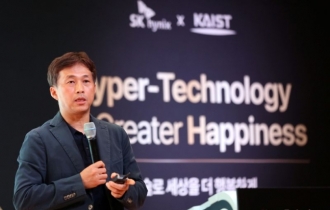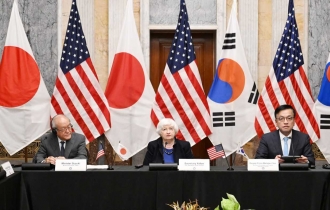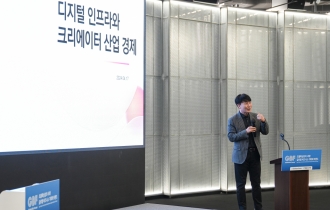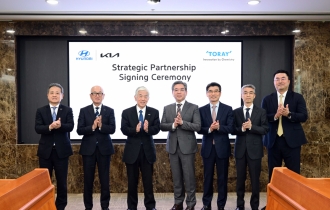[Q&A] Intel likely to face lawsuit from Korean consumers
[THE INVESTOR] US chipmaker Intel is facing a series of class action lawsuits in the US over Intel’s defective CPUs.
The defect, described as one of the most serious PC security issues of the decade, is linked to two security flaws, Meltdown and Spectre, which could allow hackers to steal sensitive data from personal computers. Processors designed by a number of chipmakers, including Intel, AMD and ARM, are said to be vulnerable to Spectre while Meltdown is said to primarily affect Intel’s processors made since 1995.
In Korea, a group of consumers are also preparing to join the movement with the help of local law firm Dahmwoo Law Group.

Dahmwoo launched a website for the lawsuit (http://cpusosong.com/wordpress/) on Jan. 8, and has since then been receiving snowballing applications. Dahmwoo said it would “prepare meticulously for the lawsuit,” which will be filed either in Korea, the US or Singapore, as soon as this month.
The following are excerpts of the interview with Kim Dong-woo, head attorney of Dahmwoo, and attorney Cho In-hwan.
The Investor: Proving whether consumers have suffered damages from the flawed chip will be a focal point in the lawsuit. Is this viable?
Dahmwoo Law Group: We are trying to find cases where consumers experienced damage due to Intel chips. We will also try to see if hacking was involved, and if computers have been affected by malicious codes or Zero Day worms, which have no available antidotes due to the defect.
There is also an increasing number of complaints over the slow-down of computers after updating and patching Microsoft’s operating system and BIOS, a firmware on the motherboard, which seem to be only a stopgap measure.
Consumers have complained that their solid-state drive and NVMe SSDs have shown noticeable performance degradation after the updates, which computer experts said is inevitable since software updates cannot completely fix the hardware defect.
TI: How many applications have you received?
DLG: The number is fast increasing and it exceeded 1,000 as of January 12, up from 600 on Jan. 9. We launched the website on Jan. 8.
TI: What kind of CPUs do the applicants say they use?
DLG: According to our survey, 90 percent of the applicants use Intel’s Core i series processors, even though the respondents could use multiple processors. Less than 10 percent of them use other Intel processor models, including Xeon.
TI: Is the lawsuit open to all Intel CPU users?
DLG: Basically, yes. Most of Intel’s CPU models made since 1995, except for Atom processors, are known to be vulnerable to the defect. I do not think there is users who are still using a CPU-installed device for more than 20 years.
The Korean Product Liability law, which allows users to file a complaint only within three years of becoming aware of the damage and of the identity of the person liable, or within 10 years from the date the defective product was delivered, is one issue that could keep some of the Intel CPU users from participating in the lawsuit in Korea.
The law firm will do more surveys to know the further details of the chips, such as the manufacturing date.
At court, Intel will possibly insist for us to prove if the consumers really own Intel CPUs, so we will ask the applicants to hand in the serial numbers and codes indicating the manufacturing date. These numbers appear on a packaging box or on the surface of the CPUs.
TI: Some are worried over how much time and money the lawsuits will cost, since we have seen how Samsung’s Galaxy Note 7 incident played out. How do you plan to dispel such concerns?
DLG: We will neither build up the hopes of the people nor hurriedly proceed with the lawsuit. We will instead take action after meticulous preparations and find the best measures to benefit the consumers. To that end, we will try to figure out the chance of winning or losing, the overall costs, and the estimated length of the lawsuit and notify the participants of such information in advance.
TI: Tell us about the timeline of the lawsuit.
DLG: We are trying to gather consumers as soon as possible and are talking with foreign law firms to see if we need to file a suit in Singapore or the US. We need to collaborate with the local law firms since we need advice from local law experts. The number of applicants for the lawsuits will likely reach 10,000 this month—which we think is enough to file the lawsuit. Ultimately, we will take action when we think we have the highest chance of winning.
TI: Why do you need 10,000 plaintiffs?
DGL: Realistically, it costs more to proceed the lawsuit in the US. If the number of the participants is too low, the cost burden weigh down on the consumers. On the other hand, if the number is too high, the reward can be too little, compared to the money and effort spent on the lawsuit. We thought that 10,000 is an ideal number that can benefit the participants the most.
TI: Can you reveal the Singaporean and US law firms you are talking with?
DLG: We cannot publicly reveal their names.
By Kim Young-won (wone0102@heraldcorp.com)
EDITOR'S PICKS
- SK hynix chief underscores chip cooperation between Korea, US
- Trilateral talks acknowledge ‘serious’ slumps of won, yen
- Samsung C&T president makes her first business trip to Milan
- Seoul Business Agency CEO says SNS marketing essential for SME
- CJ Olive Young offers real-time translators for foreign visitors
- Hyundai Motor, Toray join hands for material innovation in mobility
- Paris Baguette debuts in the Philippines
- Samsung develops fastest DRAM chip optimzied for ondevice AI















